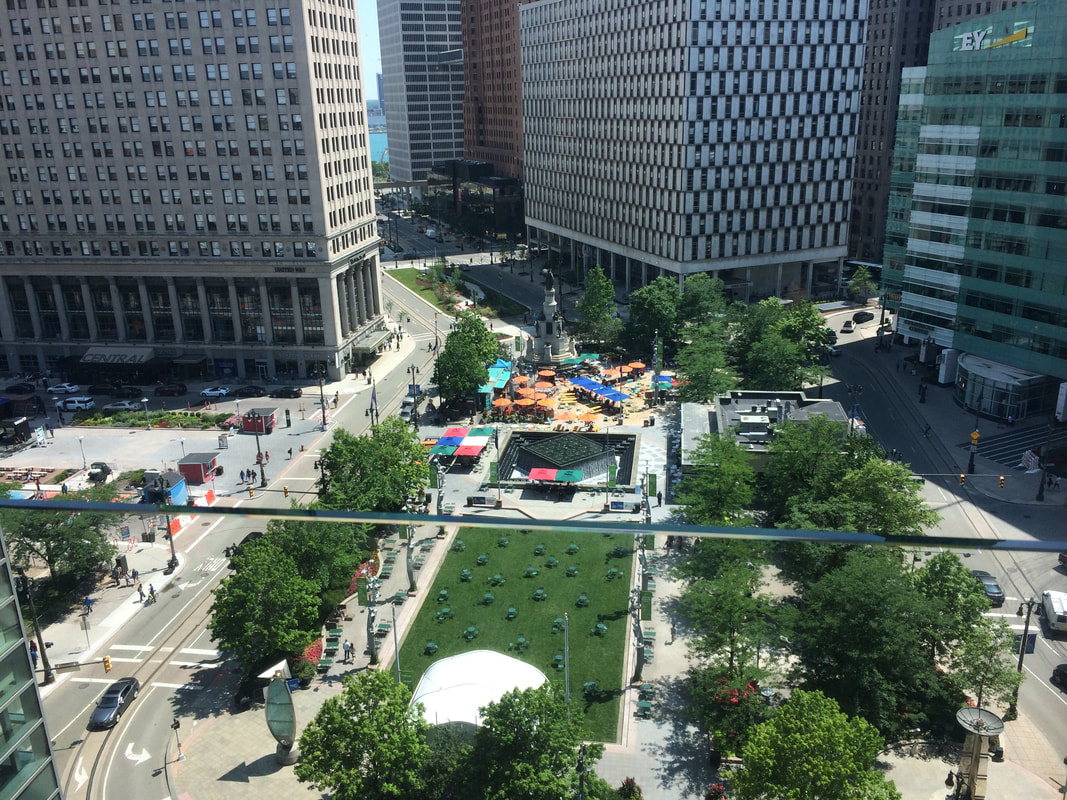The article that I chose to read and write about for this week is “The Problem With Rebuilding Detroit” by David Uberti. The article was published in late April, 2018 a couple of months before Ford officially purchased the infamous yet abandoned Michigan Central Station. Although this purchase and renovation of the beautiful train station serves as a symbol for reconstruction and revival for some, the article alludes to the gentrification and displacement of locals that often occurs when private cash is used for public benefit. Downtown Detroit has already served as an example, as the recent investment into this area by the wealthy has transformed it into a hub for the middle class and white professionals. Though the renovation of Downtown did not lead to any particular displacement, the same can not be said for populated areas such as Corktown. As businesses continue to develop and the revitalization of the Michigan Central Station attracts people towards Corktown, it leaves implications for higher property rights that cannot be afforded by the locals who have lived there for years.
After living in Detroit for about five weeks now, there are claims in the article that I can definitely agree with. Working in the center of Downtown has shown the disparity between this vibrant location and the abandoned neighborhoods not too far from Campus Martius. In Downtown, one can see thousands of men and women in their suits and heels on the weekdays, tourists visiting the most popular restaurants, and the migration of the middle and upper class to Campus Martius on the weekends to enjoy their days off. But once you venture into the outskirts of Downtown, you’re hit with the reality of a fallen Detroit: collapsing homes, graffitied walls, rundown shops.
Seeing both the wealth of Downtown and the poverty of nearby neighborhoods has given me perspective on the disparity between the two. How could the difference be so large? Would the same thing happen to Corktown with the influx of businesses and investment from the wealthy? Like the article at hand, it made me question whether further reconstruction of these locations would merely further the disparity between the impoverished and the wealthy, and ultimately displace those who have made Detroit their home. Therefore, I can see the author’s point that this reinvestment may not be as great as we think. But I would like to be more optimistic.
Living in Detroit for five weeks has also given me an appreciation and gratefulness for these reconstruction efforts. Contrary to the article, touring the facilities of Quicken Loans and Ford has shown me that these large scale private corporations are not here to merely reap profits off the poor for their own personal gain. Rather, they care about the community they reside in, and like nearly every Detroiter, are proud of the city they live in. The allocation of assets from these organizations is the stepping stone to transforming the city’s perception from abandonment to one of vibrancy and success. The cooperation of private corporations and municipal Detroit is the only way the city can acquire the resources necessary to revive itself. Though it may be a potentially daunting and even detrimental process, I hope and believe these corporations and municipal Detroit have the poise and determination to revitalize Detroit without harming the very people who have made it so special.
Link to article: https://www.huffingtonpost.com/entry/problem-with-rebuilding-detroit-michigan-ford-gentrification-cities_us_5ae31cffe4b02baed1b991c9
After living in Detroit for about five weeks now, there are claims in the article that I can definitely agree with. Working in the center of Downtown has shown the disparity between this vibrant location and the abandoned neighborhoods not too far from Campus Martius. In Downtown, one can see thousands of men and women in their suits and heels on the weekdays, tourists visiting the most popular restaurants, and the migration of the middle and upper class to Campus Martius on the weekends to enjoy their days off. But once you venture into the outskirts of Downtown, you’re hit with the reality of a fallen Detroit: collapsing homes, graffitied walls, rundown shops.
Seeing both the wealth of Downtown and the poverty of nearby neighborhoods has given me perspective on the disparity between the two. How could the difference be so large? Would the same thing happen to Corktown with the influx of businesses and investment from the wealthy? Like the article at hand, it made me question whether further reconstruction of these locations would merely further the disparity between the impoverished and the wealthy, and ultimately displace those who have made Detroit their home. Therefore, I can see the author’s point that this reinvestment may not be as great as we think. But I would like to be more optimistic.
Living in Detroit for five weeks has also given me an appreciation and gratefulness for these reconstruction efforts. Contrary to the article, touring the facilities of Quicken Loans and Ford has shown me that these large scale private corporations are not here to merely reap profits off the poor for their own personal gain. Rather, they care about the community they reside in, and like nearly every Detroiter, are proud of the city they live in. The allocation of assets from these organizations is the stepping stone to transforming the city’s perception from abandonment to one of vibrancy and success. The cooperation of private corporations and municipal Detroit is the only way the city can acquire the resources necessary to revive itself. Though it may be a potentially daunting and even detrimental process, I hope and believe these corporations and municipal Detroit have the poise and determination to revitalize Detroit without harming the very people who have made it so special.
Link to article: https://www.huffingtonpost.com/entry/problem-with-rebuilding-detroit-michigan-ford-gentrification-cities_us_5ae31cffe4b02baed1b991c9

 RSS Feed
RSS Feed
